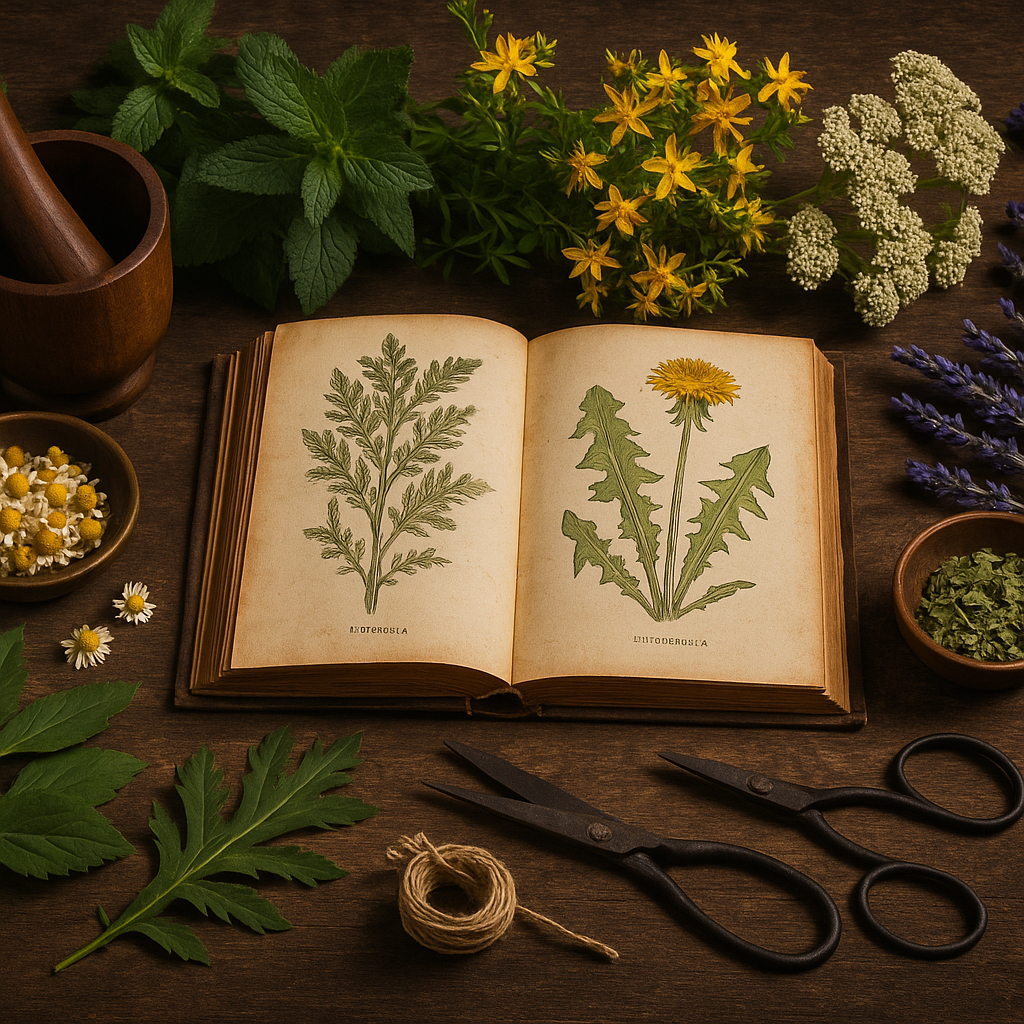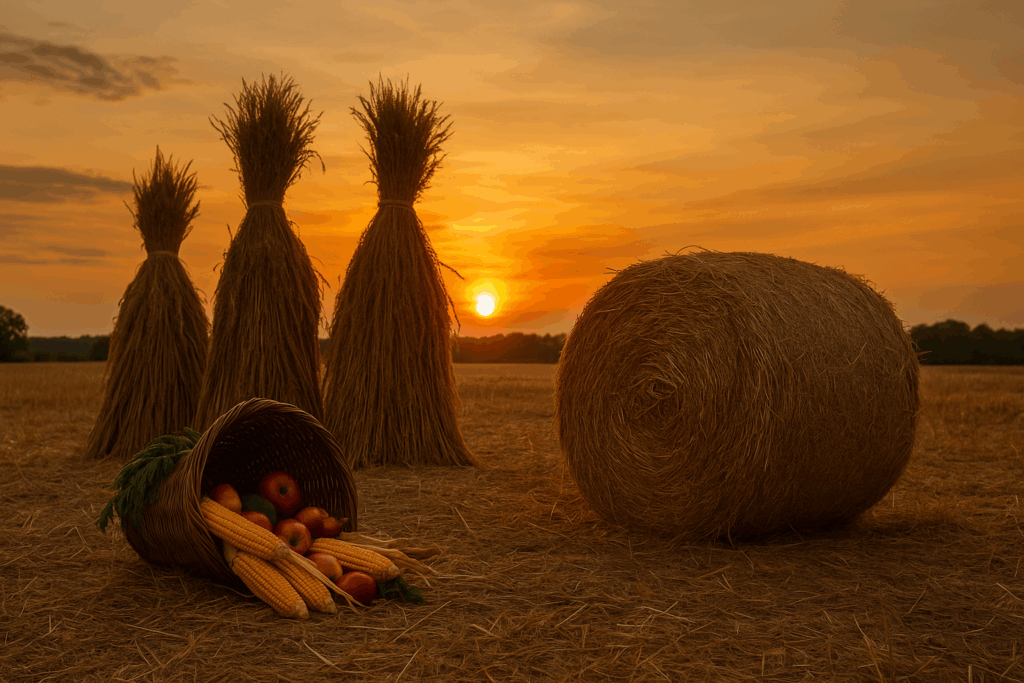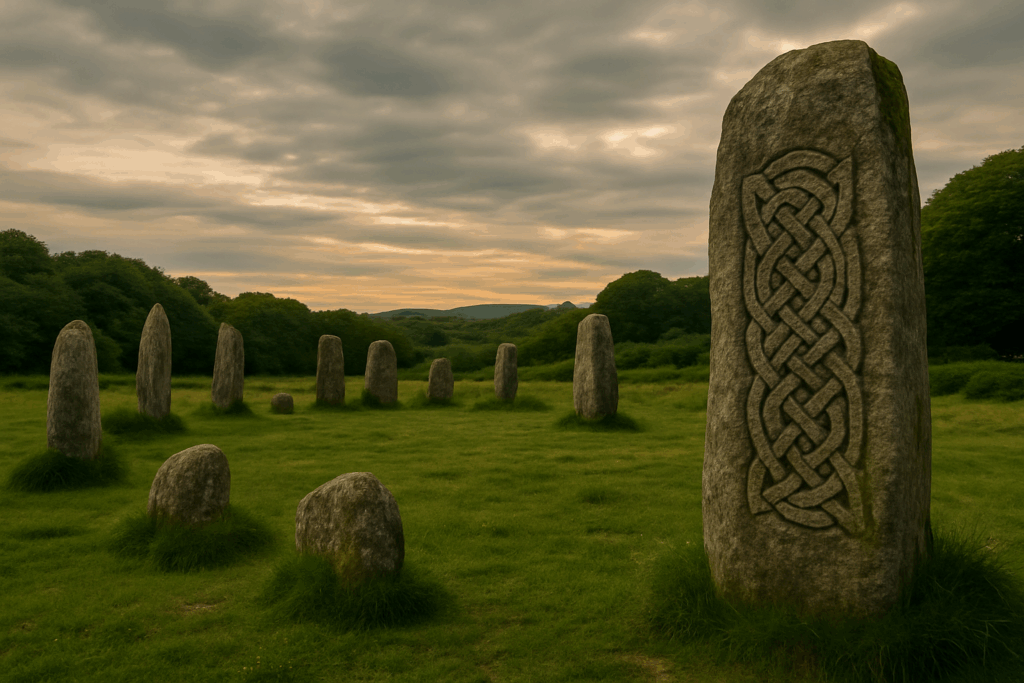Pagan Healing Herbs: A Historical Guide

From the earliest days of human civilization, plants were more than sustenance; they were medicine, magic, and mystery. For pagans across cultures, herbs were not inert materials to be exploited but living beings imbued with spirit and divine essence. The healing herb was both practical remedy and sacred ally, bridging the boundary between body and soul, human and earth, mortal and divine. The knowledge of herbs flowed from observation, experimentation, and spiritual communion. To gather plants was to engage in ritual: words of thanks spoken to the earth, offerings left at roots, timings chosen according to moon phases or astrological alignments. Healing was not merely the correction of bodily imbalance but the restoration of harmony between human life and the greater cycles of nature. Pagan herbalism thus existed at once as science and sacrament, an evolving body of lore that endured for millennia and still inspires modern spiritual practice.
The ancient world teems with examples of this herbal wisdom. In Egypt, papyrus texts record remedies drawn from garlic, honey, juniper, and aloe, plants invoked not only for their physical effects but for their spiritual purifications. The Greeks, inheriting and systematizing herbal knowledge, wove myth and medicine together: Asclepius, god of healing, was often depicted with herbs entwined around his staff, a symbol that remains with us in medicine today. Hippocrates cataloged the virtues of mint, willow, and other plants, yet behind his prescriptions lingered the older pagan reverence for nature’s vitality. In Rome, the goddess Flora and the festival Floralia celebrated the blossoms that symbolized renewal, while priests and herbalists alike relied upon sage, vervain, and rue for rituals of protection and healing. The Celts, through their druids, cultivated an intricate herbal practice. Mistletoe, harvested with golden sickles, was considered the most sacred of plants, used to cure sterility, epilepsy, and poison. Mugwort, yarrow, and elder were honored as protectors against malevolent spirits and guides for dream and divination.
Herbs in pagan traditions were often tied to planetary and elemental correspondences. Rosemary, associated with the sun, was burned for purification and memory. Moon-governed plants like chamomile and jasmine calmed the nervous system and opened intuition. Plants of Mars, such as nettle and thistle, were used to build courage and drive out illness. In this way, herbalism was not only empirical but cosmological; every leaf, root, and blossom embodied forces of the universe, making the herbalist both healer and astrologer. Timing was equally crucial: plants gathered at dawn held different virtues than those plucked beneath a full moon, and roots pulled at midsummer’s peak burned with solar potency. These practices remind us that pagan healing was not reductionist but holistic, recognizing the energetic and symbolic dimensions of nature alongside the physical.
Even in medieval Europe, when Christianity sought to suppress overt paganism, herbal wisdom endured under the guise of folk medicine. Monastic gardens preserved classical texts, yet peasants still turned to the “witches’ herbs” passed down through oral lore. St. John’s Wort, once sacred to the sun, became a midsummer remedy for melancholy. Mandrake, whose root often resembled a human form, was both feared and revered, its shriek at uprooting said to kill the unprotected harvester. Sage, rue, and vervain continued to serve as wards against illness and evil alike. This blending of folk paganism with Christian practice allowed herbal lore to survive the inquisitorial centuries, often carried in the hands of midwives, wise women, and village healers who risked persecution for their devotion to nature’s pharmacy.
Today, the resurgence of pagan practice has renewed interest in healing herbs as both spiritual allies and practical remedies. Modern pagans gather chamomile for peace, lavender for clarity, sage for cleansing, and elder for protection, echoing rituals practiced thousands of years ago. What distinguishes pagan herbalism is not only the use of herbs but the way they are approached: with reverence, reciprocity, and awareness of their sacred being. Herbs are companions in healing, not commodities; they embody the voice of the earth, offering their power to those who approach in respect. To study the history of pagan herbs is to uncover a lineage of healing that honors body, spirit, and land, binding humanity once more to the wisdom of the green world.
The herbal traditions of pagan Europe were as diverse as the landscapes themselves, each culture shaping its botanical wisdom through myth, ritual, and the lived rhythms of land and season. Among the Celts, druids cultivated a profound respect for plants as conduits of divine energy. Chief among these was mistletoe, particularly when found growing upon oak. Pliny the Elder recounts how druids would harvest it in elaborate ceremonies, using a golden sickle at the time of the new moon. The plant was believed to cure sterility in both humans and animals, to act as a universal antidote to poison, and to protect against misfortune. This reverence was not superstition but a recognition of mistletoe’s symbolic role: suspended between heaven and earth, rooted in neither, it embodied liminality, the threshold between worlds. Alongside mistletoe, herbs like mugwort were valued for protection and divination, often worn as garlands during midsummer rites to ward off evil spirits and open pathways to visionary insight. Yarrow, too, held a place of honor, applied to wounds to staunch bleeding yet also used in love divinations and dream rituals, reminding us that for the Celts healing was never limited to the physical but embraced the psychic and spiritual dimensions of life.
In the Norse world, herbal lore was interwoven with myth and magic. The Eddas speak of Odin learning nine mighty songs from the god Mímir, which gave him power over nine sacred herbs used to drive out poison and disease. This story reveals that plant lore was not merely empirical knowledge but divine gift, bestowed by gods and spirits. Juniper was burned in rituals to cleanse and protect, while angelica, a hardy plant of the North, was prized for its protective qualities and used in charms against evil. Nettle, associated with Thor, was eaten for strength and rubbed into the skin to rouse vitality, its sting symbolizing both pain and power. Rowan, though a tree, carried herbal associations as well, with its berries and twigs woven into protective amulets against sorcery and misfortune. Norse herbalism shows us a worldview in which plants were allies in the struggle against chaos and disease, embodiments of divine order in the midst of a harsh and perilous world.
Greek herbal traditions were equally rich, blending myth, medicine, and philosophy. The goddess Hecate, associated with witchcraft and liminality, was often invoked in the gathering of herbs, her presence guiding the practitioner into the hidden virtues of plants. Mandrake, with its human-shaped root, carried immense magical reputation. It was said to scream when uprooted, a myth reflecting its profound symbolic potency. Though often feared, it was used in love charms and as a sedative in healing. Garlic, associated with Hecate and Hermes, was used for protection against evil spirits and illness, while bay laurel, sacred to Apollo, crowned poets and was burned in rituals of prophecy at Delphi. Hippocrates and later Dioscorides attempted to codify the properties of plants, listing hundreds of herbs with their effects, yet this systematization never stripped herbs of their sacred resonance. For the Greeks, to work with plants was to participate in the same divine forces that animated the cosmos.
Roman herbal practice, deeply indebted to Greek learning, blended practical medicine with ritual devotion. Vervain, called herba sacra, was especially revered. Gathered at dawn without iron, it was offered to Jupiter and used in purifications, treaties, and healing rituals. Sage, too, was harvested ceremonially, with offerings of bread and wine to the earth before cutting. Rue was valued for its protective properties, warding off plague and malevolent forces, while rosemary became a plant of remembrance, used in funerals and offerings to the Manes, the spirits of the dead. In Roman gardens, herbs were cultivated not only for kitchen and medicine but as sacred presences, each with its own mythic associations. The blending of medical and ritual use reflects the Roman conviction that health depended not only on bodily balance but on right relationship with the gods.
Indigenous traditions beyond Europe show striking parallels, affirming the universality of pagan herbal wisdom. In Native American practice, sage, cedar, and sweetgrass were burned in smudging rituals to purify and invite blessing, each plant carrying specific spirit associations. Tobacco, far from a mere recreational herb, was a sacred offering to the spirits, a bridge of communication in prayer. In Mesoamerica, cacao was revered as both food of the gods and medicine, employed in rituals of renewal. Across Africa, plants such as kola nut and frankincense played roles in healing and ritual, symbolizing vitality, communion, and sacred presence. These parallels remind us that pagan herbalism is not limited to Europe but is a universal expression of humanity’s relationship with the green world: a recognition that plants are teachers, healers, and sacred kin.
What unites these diverse traditions is the principle of reciprocity. To harvest an herb was not a mere act of taking but of entering into dialogue with a living being. Prayers were spoken, libations poured, songs sung. Timing was chosen not for convenience but for alignment with cosmic rhythms—sunrise, solstices, lunar phases, and planetary hours. This ritualized approach ensured that healing was never exploitative but cooperative, maintaining balance between human need and the sacred integrity of the plant. Pagan herbalism thus carried within it an ethic of reverence that modern herbalists and pagans are now seeking to revive. By acknowledging the spirit within each plant, the healer entered a covenant of respect, one that recognized that true healing arises not only from the chemistry of roots and leaves but from the sacred relationship between human, plant, and cosmos.
When we begin to focus on individual plants, the depth of pagan herbal traditions becomes even more apparent. Each herb is not merely a physical substance but a living story, a nexus of myth, ritual, healing, and symbolism that stretches across cultures and centuries. To explore these plants is to understand how deeply humanity has been intertwined with the green world, and how the smallest leaf or flower can hold an entire cosmology within its form.
Mugwort is one of the most powerful examples. Known to the Celts as a midsummer herb, mugwort was burned in bonfires during solstice celebrations to protect against evil spirits and wandering sickness. Its bitter leaves were carried as amulets, hung in doorways, or placed under pillows to encourage vivid dreams and prophetic visions. In Roman practice, travelers placed mugwort in their sandals to prevent fatigue, linking it to endurance and protection on journeys. In Asia, particularly in Chinese medicine, mugwort was employed in the practice of moxibustion, where dried mugwort was burned near the body to stimulate energy pathways. Thus, across cultures, mugwort embodies liminality—standing at thresholds, guarding against harm, and opening portals of insight. For modern pagans, mugwort continues to serve as an herb of divination, dreamwork, and spiritual protection, reminding us that plants often serve as guardians of the spaces between seen and unseen.
Sage, especially white sage in North America and garden sage in Europe, has long been valued for its cleansing properties. Among Indigenous peoples, sage is one of the four sacred medicines used in smudging ceremonies, its smoke believed to purify both people and spaces, carrying prayers to the spirits. In Europe, sage was a staple of medieval herbals, praised for its ability to preserve health and prolong life. The Latin phrase “Cur moriatur homo cui Salvia crescit in horto?”—“Why should a man die while sage grows in his garden?”—reflects the reverence in which it was held. Sacred to Jupiter in Roman ritual, sage was harvested with solemn rites, never with iron, and always accompanied by offerings to the earth. Today, sage remains a central plant in pagan and spiritual practice, its smoke used to banish negativity and invite clarity, its leaves brewed in teas to support digestion and healing. Sage exemplifies the convergence of physical and spiritual medicine, embodying the pagan insight that purification is at once bodily and cosmic.
Rosemary is another herb that bridges the realms of body, memory, and spirit. In Greece and Rome, rosemary was burned on altars and worn in wreaths, sacred to both remembrance and fidelity. Students in Athens were said to braid rosemary into their hair to sharpen the mind, a tradition echoed in Shakespeare’s Hamlet, where Ophelia remarks, “There’s rosemary, that’s for remembrance.” Its association with memory and the soul made it a common funerary herb, scattered over graves or burned at memorials to honor the departed and ensure their peaceful passage. In healing, rosemary was valued for its stimulating properties, believed to strengthen the heart and circulation. Pagan tradition wove these practical virtues into a sacred pattern, linking rosemary with the element of fire and the sun, carriers of clarity, vitality, and renewal. Modern pagans continue this practice, using rosemary in rituals of remembrance, protection, and blessing, finding in its fragrant needles a bridge between past and present, living and dead.
Perhaps no herb carries a more dramatic aura than the mandrake. Native to the Mediterranean, its root often grows in forked shapes resembling human figures. This uncanny resemblance gave rise to myths of its powerful and dangerous spirit. In Greek and Roman traditions, mandrake was linked with love and fertility, used in potions to stir desire and in charms to ensure conception. Yet its potency was feared as much as it was revered. Folklore claimed that the plant screamed when uprooted, and that its cry could kill the unprotected harvester. To gather mandrake safely, elaborate rituals were devised: the root was tied to a dog, who was driven away to pull it from the earth, sacrificing itself to spare the human gatherer. Beyond its myth, mandrake was indeed a powerful narcotic, containing alkaloids that could induce hallucination, sedation, or even death if misused. In pagan practice, its danger was part of its sanctity, for the most potent allies often required caution and respect. The mandrake embodies the pagan understanding that plants are not passive resources but spirited beings, capable of both healing and harm, demanding reverence and discernment.
These herbs, like countless others, are threads in a vast tapestry of healing and spirituality. Chamomile, with its golden flowers, was long associated with the sun and used to ease fevers, calm nerves, and invite restful sleep. Yarrow, with its feathery leaves, was a wound-healer for warriors and a plant of divination for lovers. Elder, tree and herb combined, was sacred to the goddess in many traditions, its blossoms and berries healing the body, while its spirit was revered as a guardian of the household. Each plant was both practical remedy and sacred symbol, a bridge between human frailty and divine vitality.
By tracing these herbs through history, we discover not only the pharmacopoeia of our ancestors but their worldview: that every leaf carries spirit, that healing is communion, and that the natural world is suffused with sacred presence. In studying pagan healing herbs, we inherit not just recipes but relationships—a way of being in the world that sees plants not as commodities to be consumed but as kin to be honored, allies in the eternal dance of health, life, death, and rebirth.
The survival of pagan herbalism into the medieval and early modern periods reveals both the resilience of ancestral wisdom and the tensions that arose as dominant religions sought to suppress or absorb it. Herbs carried with them not only healing power but also the memory of older ways, and thus they became contested ground: tolerated when cloaked in Christian symbolism, condemned when linked too openly to pagan rites. The monasteries of Europe preserved much of classical herbal knowledge through translations of Dioscorides and Galen, cultivating gardens of sage, rosemary, lavender, and rue for medicinal use. Yet outside cloistered walls, village healers, midwives, and cunning folk continued to practice their art in ways deeply rooted in pagan cosmology. For them, gathering herbs was never just a matter of pharmacology. It remained a ritual act: timing the harvest by moon phases, offering prayers to the spirit of the plant, or using charms spoken in the old tongue. This dual existence—herbs as both church-sanctioned medicine and folk-sacred ritual—allowed pagan herbalism to endure, even under the shadow of suspicion.
By the late Middle Ages, however, the fear of heresy and witchcraft cast a darker light on this lore. The same women who offered sage tea for fevers or used chamomile poultices for wounds might be accused of sorcery, especially if their work included charms, divination, or herbs associated with altered states of consciousness. Plants like mandrake, henbane, belladonna, and datura became infamous as ingredients in “witches’ ointments,” capable of inducing visions, ecstatic flights, or states of trance. These herbs, feared for their potency, were demonized alongside those who used them, their sacred roles in older traditions reinterpreted as diabolical. The infamous “witches’ sabbat,” described in lurid detail by inquisitors, may in part reflect the shamanic use of such plants for visionary journeys, where the soul left the body to travel between worlds. What had once been divine communion with plant spirits was recast as demonic pact. The persecution of so-called witches was thus not only an attack on individuals but also on the pagan relationship to herbs as living allies of magic and healing.
Despite centuries of suppression, the threads of this lore were never fully severed. Folk practices carried into the modern era show remarkable continuity. In rural Europe, people still placed rowan twigs above doorways, burned juniper for protection, or brewed elderflower teas for fever. St. John’s Wort, named for a Christian saint, continued to be harvested on midsummer’s eve, its fiery yellow flowers carrying the solar blessing of pagan tradition. Even the gardens of ordinary households held remnants of older reverence: thyme for courage, basil for protection, parsley for cleansing. In these plants, memory lingered. They were living archives, bearing within their leaves the continuity of pagan worldview.
In the twentieth and twenty-first centuries, the revival of pagan spirituality has brought herbalism once more into sacred focus. Wicca and neo-pagan traditions emphasize herbs in spellwork, healing, and ritual, drawing upon both historical sources and intuitive practice. Sage, mugwort, lavender, and rosemary are staples of modern pagan households, used in smudging, protection charms, or offerings on altars. Herbal teas and tinctures serve not only bodily wellness but ritual preparation, aligning body and spirit for sacred work. What distinguishes this revival from purely medical herbalism is the recognition of plants as spirited beings. Modern pagans often address herbs as allies, thanking them for their gifts, and treating the act of harvesting as a form of prayer. This worldview resonates with indigenous practices worldwide, affirming a global recognition that healing plants are kin, not commodities.
At the same time, ecological awareness has reshaped pagan herbalism in vital ways. The overharvesting of white sage and other sacred plants has sparked ethical discussions within the pagan community about sustainability and cultural respect. Many practitioners now emphasize growing one’s own herbs, using local plants, and cultivating relationships with the land. This not only ensures ecological responsibility but also deepens the spiritual bond, for to grow a plant oneself is to enter into a cycle of care, reciprocity, and intimacy that echoes the very heart of pagan tradition. In this sense, modern herbal practice is both revival and innovation, carrying forward ancient reverence while adapting it to contemporary concerns about ecology, ethics, and cultural sensitivity.
Ultimately, the history of pagan healing herbs is not just the story of plants but of relationship: between humans and nature, between memory and survival, between the body’s needs and the spirit’s longings. It teaches us that healing is never merely mechanical but relational, a dialogue with the green world that sustains us. Whether whispered in the midnight gathering of mugwort, burned in the cleansing smoke of sage, or steeped in the calming brew of chamomile, herbs continue to speak the language of sacred healing. They remind us that to live well is to live in balance, honoring the powers of earth that offer their leaves, roots, and blossoms not only to cure but to connect us with the divine rhythms of life.





